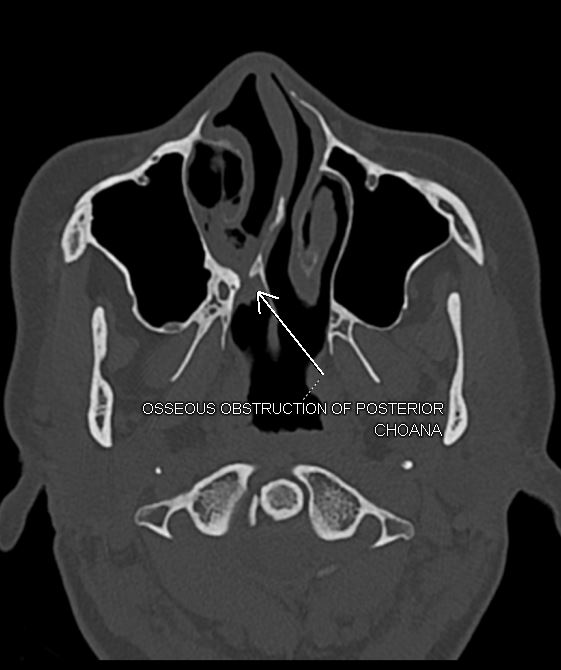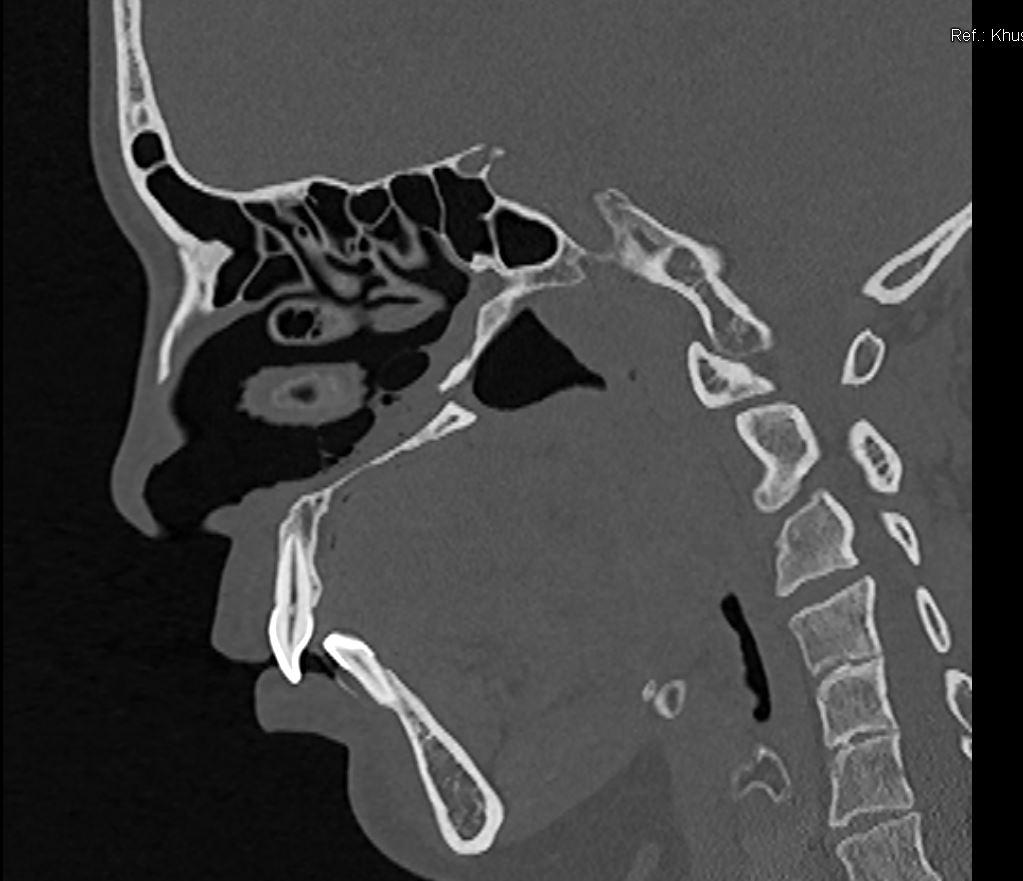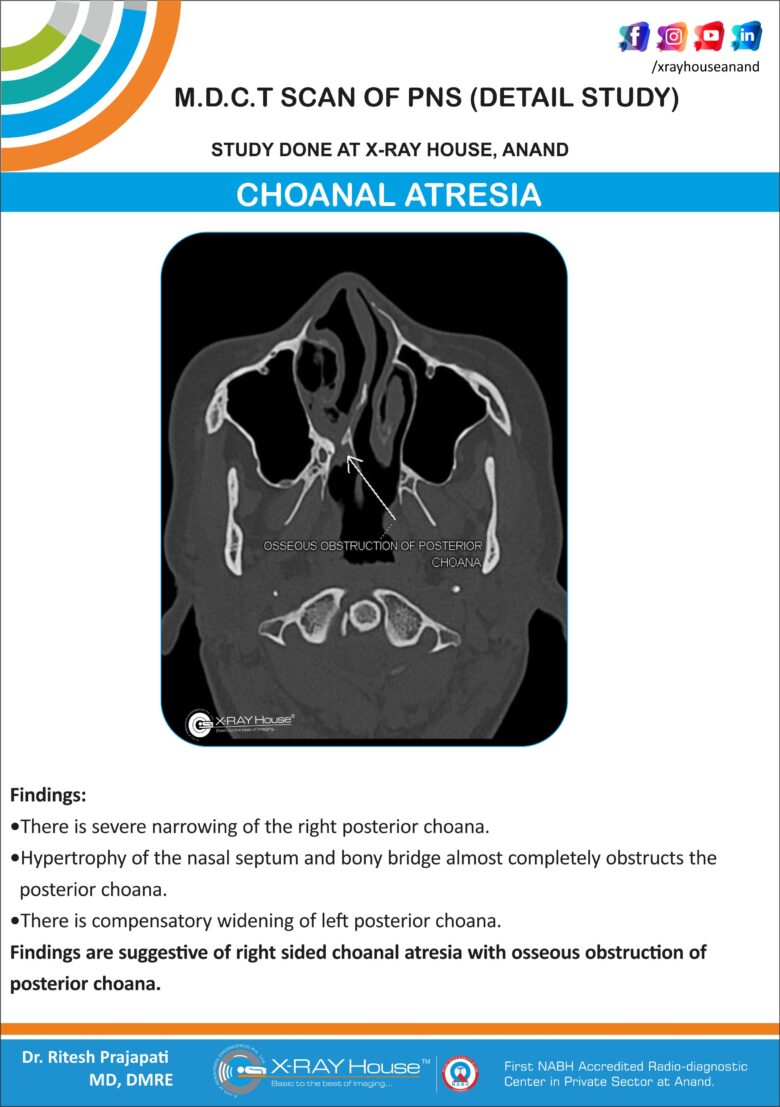CHOANAL ATRESIA


Findings:
- There is severe narrowing of the right posterior choana.
- Hypertrophy of the nasal septum and bony bridge almost completely obstructs the posterior choana.
- There is compensatory widening of left posterior choana.
Findings are suggestive of right sided choanal atresia with osseous obstruction of posterior choana.
Discussion:
Choanal atresia is a birth defect where the posterior openings of the nasal passages (choanae) are blocked, preventing air from passing from the nose to the back of the throat.
The blockage is caused by a failure of the nasal passages to develop properly during fetal development.
There are two types of choanal atresia:
Unilateral:
- A unilateral choanal atresia may not be detected until much later in life because the baby manages to get along with only one nostril available for breathing.
- One-sided nasal blockage or discharge: Infants may experience persistent nasal congestion or discharge on the affected side.
- Less severe breathing problems: Unilateral atresia typically presents with less severe breathing problems than bilateral atresia.
Bilateral: Both nasal passages are blocked.
- Acute respiratory distress: Difficulty breathing, cyanosis (bluish discoloration of the skin), and breathing failure are common at birth.
- Feeding difficulties: Newborns may struggle to feed due to the inability to breathe and swallow simultaneously.
- Cyanosis: Bluish discoloration of the skin, especially around the mouth and lips, due to lack of oxygen.
Choanal atresia is relatively uncommon, with an estimated incidence of 1 in 5,000 to 1 in 7,000 births.
Choanal atresia can occur in isolation or as part of other syndromes, such as CHARGE syndrome, which includes coloboma, heart defects, atresia choanae, growth retardation, genital abnormalities, and ear abnormalities.






